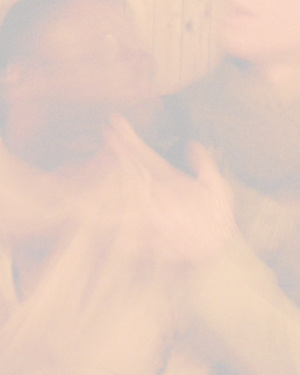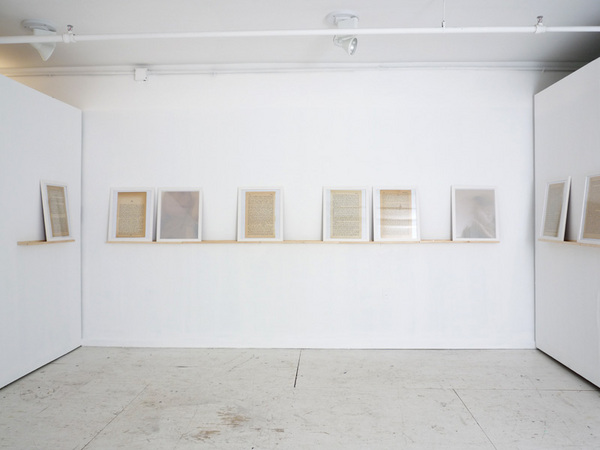This is an archive of the ArtCat Zine, 2007-2009. Please visit our new project, IDIOM.
Paul Mpagi Sepuya's "Alexandria" at Envoy
In his recently closed Alexandria, artist Paul Mpagi Sepuya juxtaposes pages of text torn from novels with abstracted figurative photographs. The pages are taken from Laurence Durell’s Alexandria Quartet, from which the exhibition gets its title. Each text was selected specifically to avoid plot details and focus instead on emotional resonance.
The effect of this combination is a pleasant ambiguity, as the fate of the figure in the photos is reflected as a corresponding absence in plot. We are left with the barest outlines of recollected experiences, recorded in complimentary ways across different media. Each page and each photo seems to inhabit the moment when, its structure having vanished, the memory itself is just about to dissolve. This effect is heightened by the enlargement of the pages as though what little semblance remained was to be scrutinized more closely.

Sepuya’s latest book, a collection of portraits entitled Beloved Object & Amorous Subject, Revisited, revels in the immaculate translation of detail to the printed page. This work is such an obvious contrast that it is tempting to read Alexandria as a flirtation with a different form of representational fidelity, a sort of tawdry, expressionist affair after a long and practical marriage with (literal) photo-realism.
Or perhaps this work is supplementary, merely an attempt at a different sort of portraiture. By lending the portrait frame to a textual narrative as well as abstract portrait, Sepuya might simply be searching for the limits of his own production, indicating precisely where the portrait, as that claim to likeness, falls short. Or maybe he is attempting to render those memories for which likeness or accuracy is not the point, where honesty demands a renegotiation of the relationship to representation.
Speaking with Jack Pierson in a recent issue of Interview, Sepuya has said that he dislikes hanging his work on walls, preferring mantles or shelves instead. Further, almost all of his portraiture is of people he is close to, rather than models or actors. Both of these proclivities can be read as a supporting an artistic practice that grows out of, and takes place within, lived experience. If this is the case, than its quite possible to expect more of the abstract and the conceptual from Sepuya in the future, which, based on Alexandria, would not be a bad thing at all.
ZINE
HOME
TIPS / COMMENTS
CATEGORIES
CONTRIBUTORS
- Greg Afinogenov
- B. Blagojevic
- Adda Birnir
- Susannah Edelbaum
- Julie Fishkin
- Paddy Johnson
- Jessica Loudis
- Christopher Reiger
- Andrew Robinson
- Peter J. Russo
- Blythe Sheldon
- S.C.Squibb
- Hrag Vartanian

